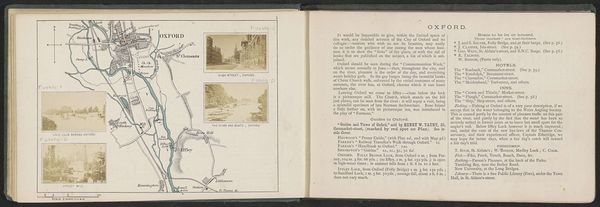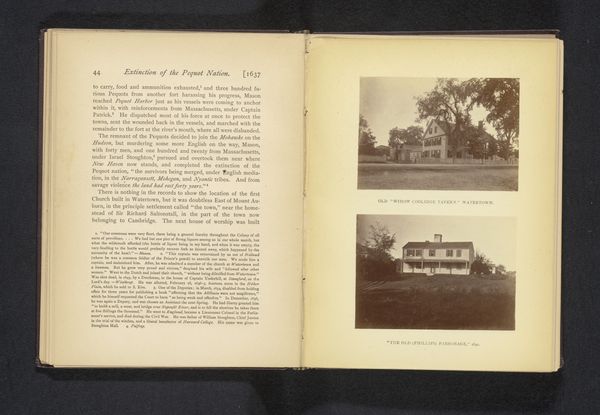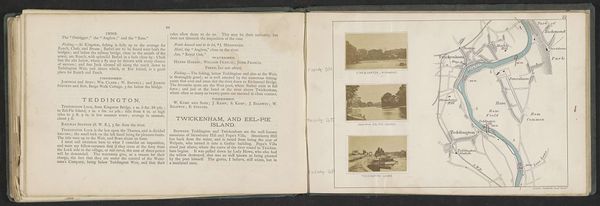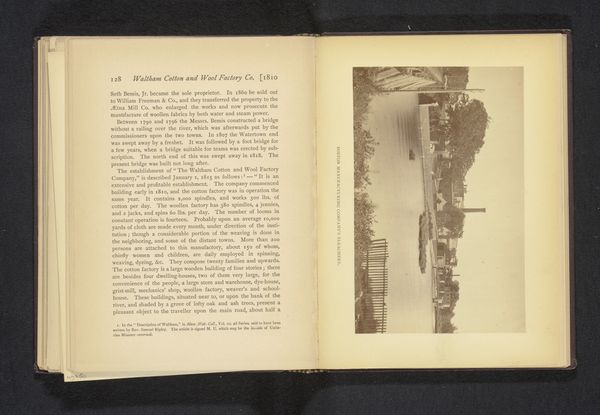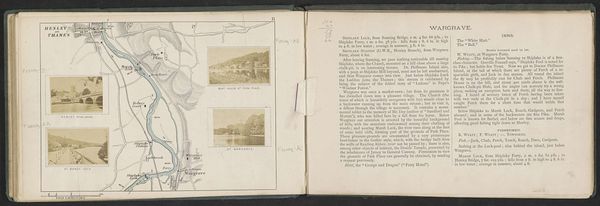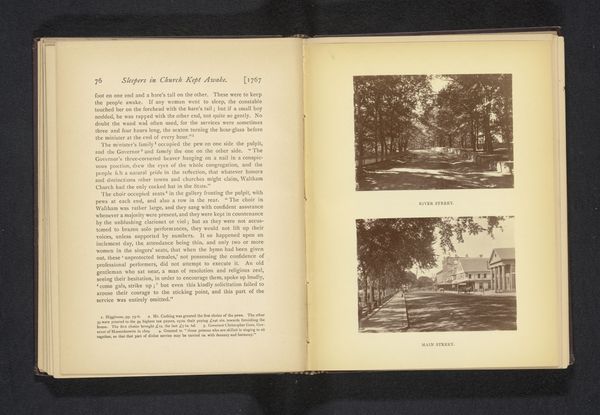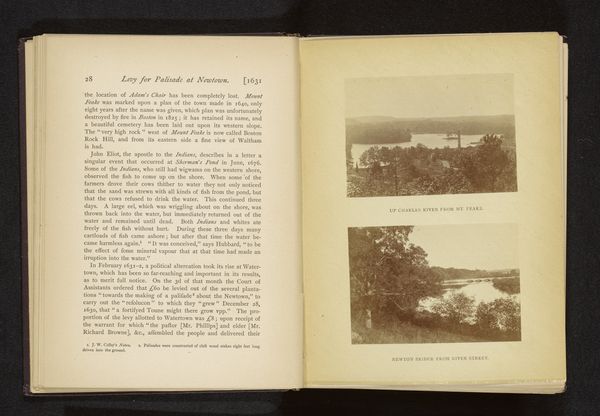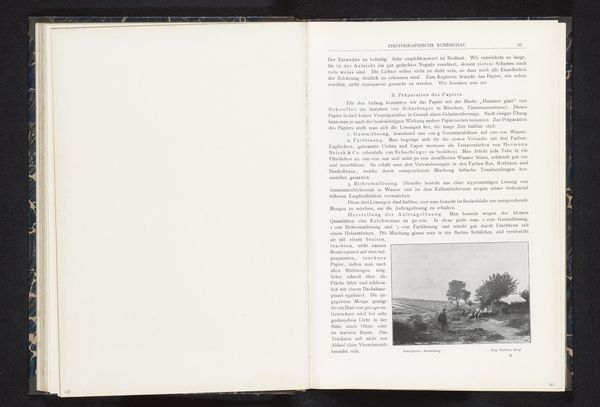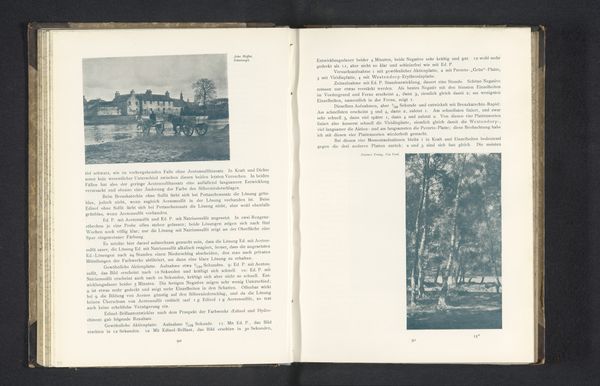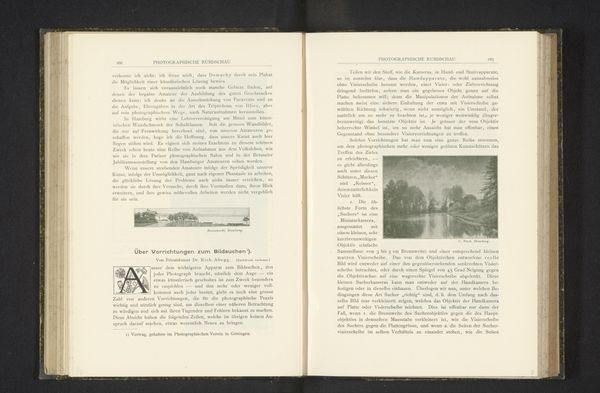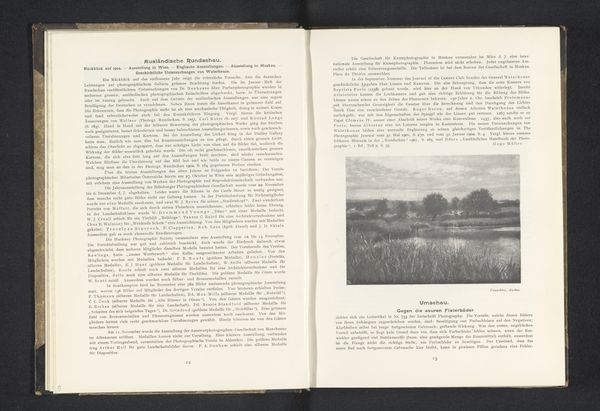
print, plein-air, photography
#
16_19th-century
#
ink paper printed
# print
#
plein-air
#
landscape
#
photography
Dimensions: height 31 mm, width 53 mm
Copyright: Rijks Museum: Open Domain
Curator: Looking at this fascinating album page by Henry W. Taunt, titled "Gezicht op een brug bij Nuneham Courtenay," dated 1871, what springs to mind? It is an interesting interplay between text and photography, almost like a proto-travel guide page. Editor: It has a sort of romantic, bucolic feel, doesn’t it? A dreamy stillness captured in these photographic vignettes paired with descriptive text that grounds them. You know, images and words like these helped create and maintain ideas about place. Curator: Precisely. Taunt, working in the Victorian era, was keen on documenting the Thames Valley. He was attempting to codify and control what could be known and shown about the local landscape, and distribute the resultant book broadly. Here we see how printed matter and photographs intersected in an age newly preoccupied with seeing and controlling land at scales like never before. It looks as if he had the plates printed in ink and then the paper images adhered to them? Editor: Definitely. Taunt's artistic choice really points to photography’s growing role in shaping perceptions of landscape and national identity. Consider how these serene images, in their seeming objectivity, could gloss over the social realities and access inequities within the Thames Valley in the 19th century. We always have to consider what isn't shown or spoken. Who did this view belong to, and who got to access it? Curator: Absolutely, who benefits? It invites a crucial reflection on the gaze behind the lens. There is such an intentional shaping of visual experience. That also forces us to consider this photograph within the context of landscape painting, a major preoccupation in England at this time. To what degree does the new medium borrow compositional elements and strategies from paint? Editor: Right, that historical framing is critical! We can view Taunt's work as part of this larger discussion on environmental politics. His images of bridges, locks, and rivers intersect in complex ways. How do the representations influence broader policies regarding the environment? I am just not sure of the long-term consequences of those seemingly innocuous portrayals of pastoral perfection. Curator: I think, for me, that that contrast between "seeming objectivity," and "possible pernicious effect," sits at the core of all landscape depictions, regardless of their medium. That paradox is very productively engaged here. Editor: It absolutely offers much for conversation, that the medium of ink, paper and photograph may still hold contemporary consequence, even today.
Comments
No comments
Be the first to comment and join the conversation on the ultimate creative platform.
